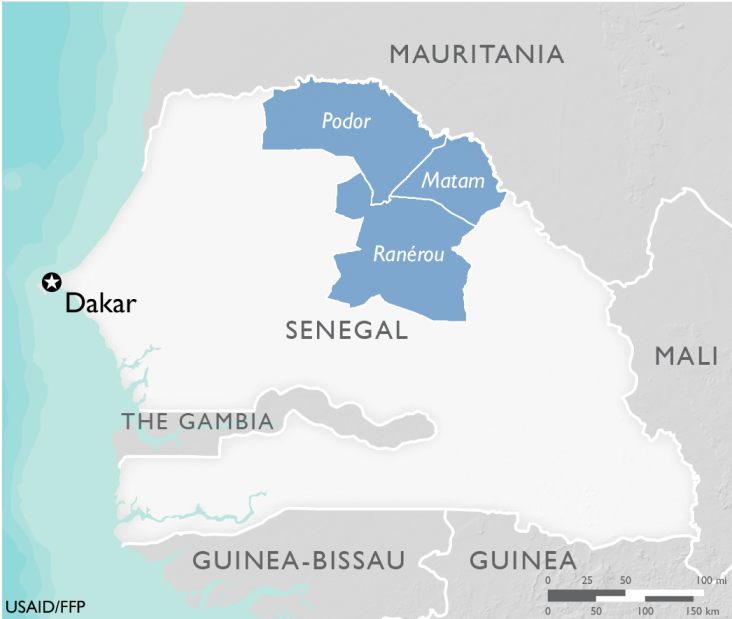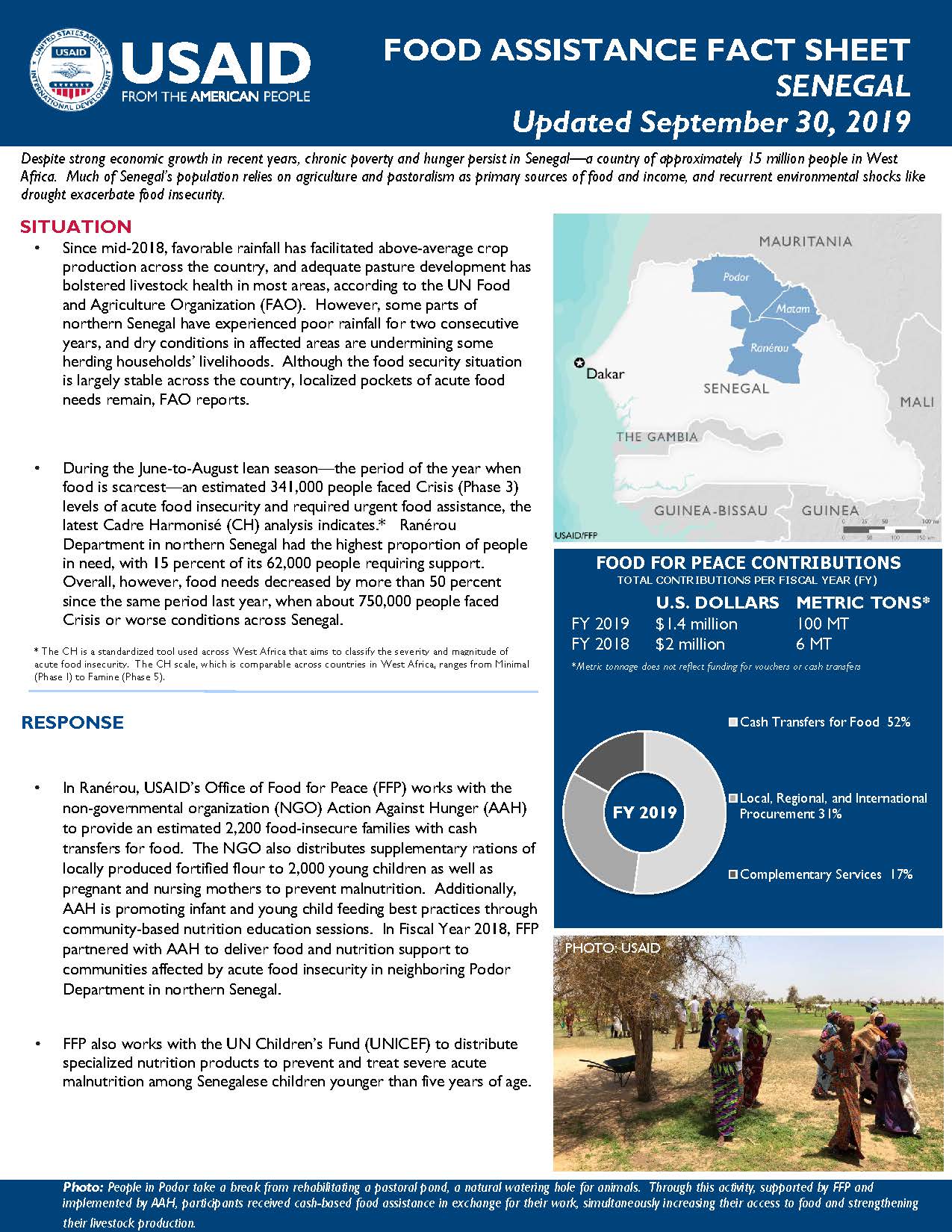Home » What We Do » Agriculture and Food Security » Food Assistance » Where We Work » Food Assistance Fact Sheet - Senegal
- What We Do
- Agriculture and Food Security
- Democracy, Human Rights and Governance
- Economic Growth and Trade
- Education
- Environment and Global Climate Change
- Gender Equality and Women's Empowerment
- Global Health
- Humanitarian Assistance
- Transformation at USAID
- Water and Sanitation
- Working in Crises and Conflict
- U.S. Global Development Lab
Speeches Shim

September 30, 2019
Despite strong economic growth in recent years, chronic poverty and hunger persist in Senegal—a country of approximately 15 million people in West Africa. Much of Senegal’s population relies on agriculture and pastoralism as primary sources of food and income, and recurrent environmental shocks like drought exacerbate food insecurity.
Situation
- Since mid-2018, favorable rainfall has facilitated above-average crop production across the country, and adequate pasture development has bolstered livestock health in most areas, according to the UN Food and Agriculture Organization (FAO). However, some parts of northern Senegal have experienced poor rainfall for two consecutive years, and dry conditions in affected areas are undermining some herding households’ livelihoods. Although the food security situation is largely stable across the country, localized pockets of acute food needs remain, FAO reports.
- During the June-to-August lean season—the period of the year when food is scarcest—an estimated 341,000 people faced Crisis (Phase 3) levels of acute food insecurity and required urgent food assistance, the latest Cadre Harmonisé (CH) analysis indicates.* Ranérou Department in northern Senegal had the highest proportion of people in need, with 15 percent of its 62,000 people requiring support. Overall, however, food needs decreased by more than 50 percent since the same period last year, when about 750,000 people faced Crisis or worse conditions across Senegal.
Food Assistance Fact Sheet - Senegal ![]() (pdf - 226k)
(pdf - 226k)
*The CH is a standardized tool used across West Africa that aims to classify the severity and magnitude of acute food insecurity. The CH scale, which is comparable across countries in West Africa, ranges from Minimal (Phase 1) to Famine (Phase 5).
Response
- In Ranérou, USAID’s Office of Food for Peace (FFP) works with the non-governmental organization (NGO) Action Against Hunger (AAH) to provide an estimated 2,200 food-insecure families with cash transfers for food. The NGO also distributes supplementary rations of locally produced fortified flour to 2,000 young children as well as pregnant and nursing mothers to prevent malnutrition. Additionally, AAH is promoting infant and young child feeding best practices through community-based nutrition education sessions. In FY 2018, FFP partnered with AAH to deliver food and nutrition support to communities affected by acute food insecurity in neighboring Podor Department in northern Senegal.
Food for Peace Contributions
Total Contributions:
| Fiscal Year | U.S. Dollars | Metric Tons |
|---|---|---|
| Fiscal Year 2019 | $1.4 million | 100 MT |
| Fiscal Year 2018 | $2 million | 6 MT |
* Metric tonnage does not reflect funding for vouchers or cash transfers


Comment
Make a general inquiry or suggest an improvement.